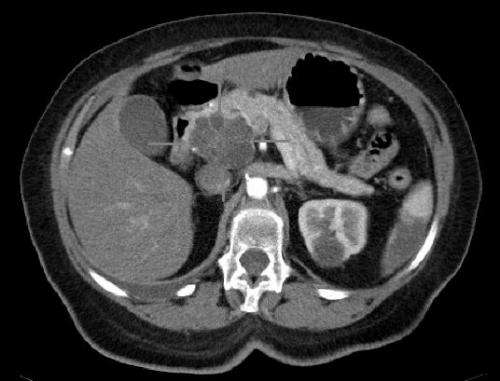Scientists develop novel platform for treatment of breast, pancreatic cancer

Scientists from the Florida campus of The Scripps Research Institute (TSRI) have identified a novel synthetic compound that sharply inhibits the activity of a protein that plays an important role in in the progression of breast and pancreatic cancers.
In the new study, to be published in the February 2015 print edition of the journal Molecular Pharmacology, the scientists showed that the compound, known as SR1848, reduces the activity and expression of the cancer-related protein called "liver receptor homolog-1" or LRH-1.
"Our study shows that SR1848 removes LRH1 from DNA, shutting down expression of LRH-1 target genes, and halts cell proliferation," said Patrick Griffin, chair of the TSRI Department of Molecular Therapeutics and director of the Translational Research Institute at Scripps Florida. "It's a compound that appears to be a promising chemical scaffold for fighting tumors that are non-responsive to standard therapies."
LRH1 plays a crucial role in breast cancer through its regulation of genes involved in hormone synthesis and cholesterol metabolism—also key risk factors in cardiovascular disease. LRH-1 has also been implicated as a tumor promoter in intestinal and pancreatic cancer. Overexpression of LRH-1 has been shown to promote invasiveness and metastasis, the usually lethal spread of the disease.
"LRH-1 has been implicated in the proliferation and metastasis of estrogen receptor-positive breast cancers and the more difficult to treat estrogen receptor-negative breast cancers," said Research Associate Alex Corzo, the first author of the study. "This suggests that repressing LRH-1 could be useful in treating the more aggressive triple-negative breast cancer subtype where therapies are currently so limited."
In fact, the study showed that levels of LHR-1 in a cell's nucleus began to diminish four hours after treatment with SR1848, and the compound repressed specific target genes as early as two hours after administration.
Griffin noted that SR1848 also appears attractive as a potential therapeutic because of its lack of impact on cells that do not express LRH1, which could mean few potential side effects.
"It's a novel mechanism that needs more study," he said.
More information: "Antiproliferation Activity of a Small Molecule Repressor of Liver Receptor Homolog 1s," molpharm.aspetjournals.org/content/87/2/296.full
















